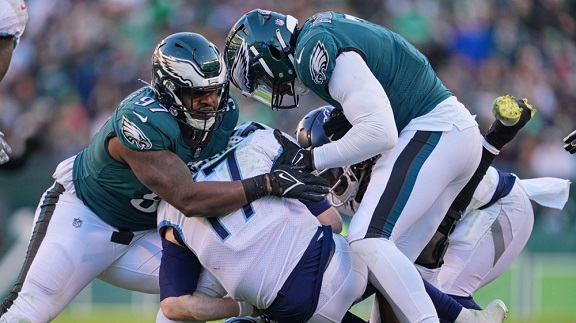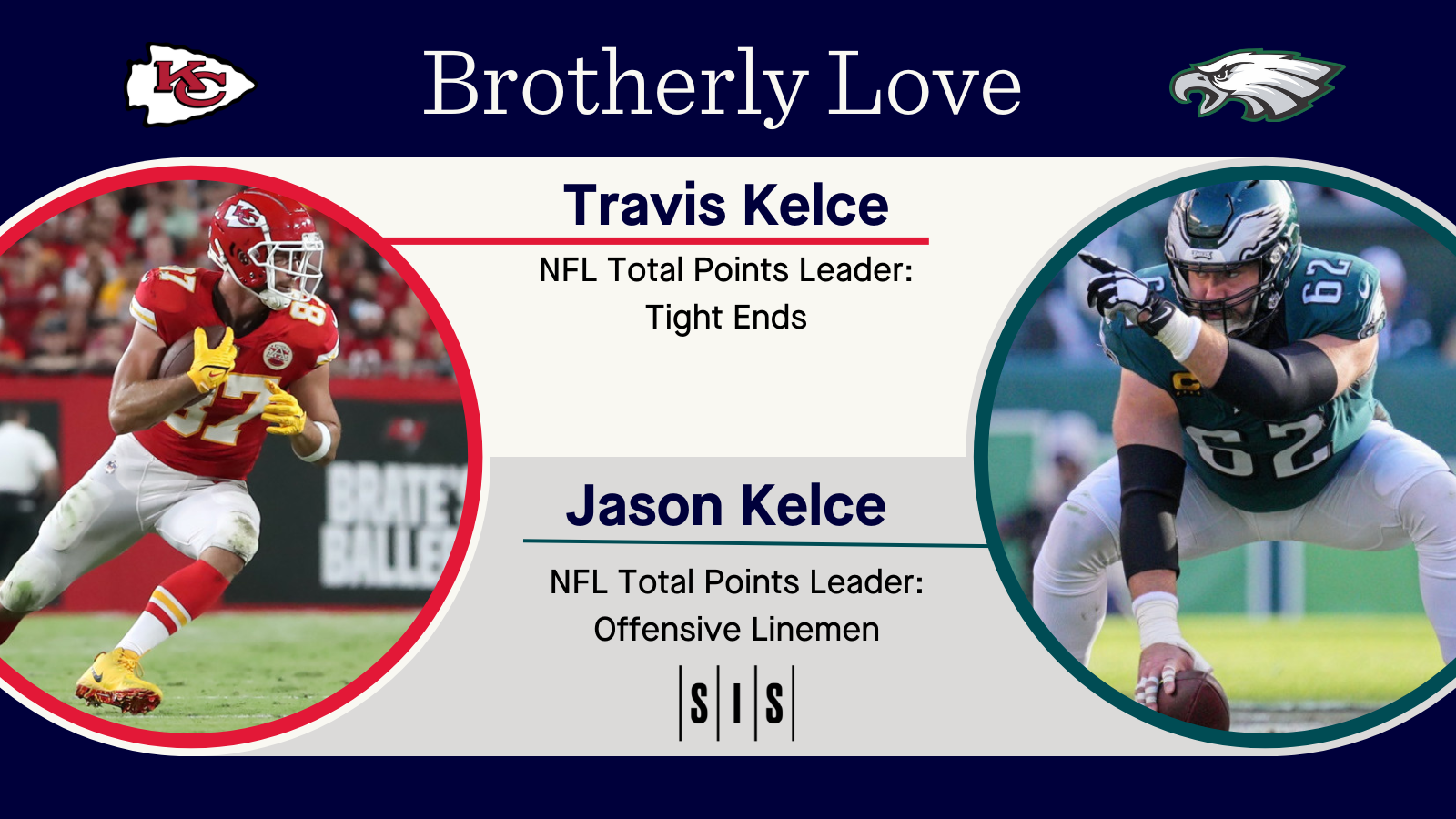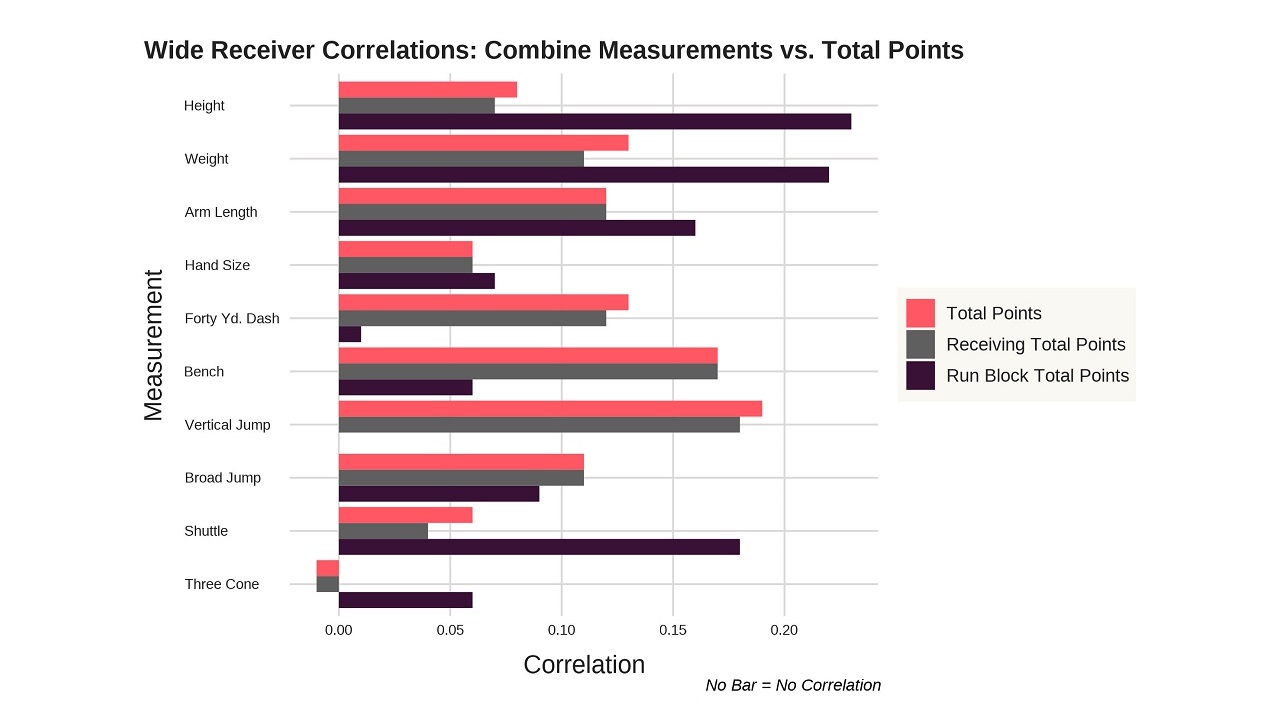Over the spring/summer, the SIS R&D staff is convening on the Off the Charts Podcast to talk about their top ten players at a position. To do this, we pit two methodologies against each other:
- The “Scouts”, which comes down to the film-based opinions of Matt Manocherian and Bryce Rossler, each of whom has a lot of experience breaking down film and scouting players (Matt having done it for NFL teams).
- The “Stats”, which involves James Weaver and Alex Vigderman devising a ranking based on a suite of metrics, and having that ranking speak for itself.
Officially, Sports Info Solutions does not condone the dichotomy between scouting and statistical analysis. Each of them provides data in their own way and should inform our evaluation of a player.
When we originally produced the Football Rookie Handbook before transitioning that content to our NFL Draft site, we put the scouting reports and stats side-by-side with the idea that the reader would bounce back and forth between them and leverage both to come to a conclusion about a prospect.
So, without further ado, let’s get to these ‘Best Offensive Tackle in the NFL’ lists and then do a deep dive on why each group ranked as it did.
| Scouts’ Opinion | Statistical Analysis |
| 1. Trent Williams | 1. Tristan Wirfs |
| 2. Tristan Wirfs | 2. Kelvin Beachum |
| 3. Lane Johnson | 3. Orlando Brown Jr. |
| 4. Laremy Tunsil | 4. Taylor Moton |
| 5. Andrew Thomas | 5. Rob Havenstein |
| 6. Rashawn Slater | 6. Lane Johnson |
| 7. Penei Sewell | 7. Ryan Ramczyk |
| 8. Ryan Ramczyk | 8. Brian O’Neill |
| 9. Taylor Moton | 9. Jake Matthews |
| 10. Terron Armstead | 10. Braden Smith |
We’ll explain the methodology that generated the Stats list in a little bit, but the biggest discrepancies between the lists came as a result of the ‘Stats’ crew leaning so hard on volume numbers. Only three players from the stats-based list accrued fewer than 2,700 snaps over the last three years (Lane Johnson, Ramczyk, and Braden Smith). By contrast, none of the four players who the scouts ranked fourth through seventh cracked that threshold.
If we had to re-do this exercise, some percentage of the Total Points weighting that the Stats crew generated would have been repurposed towards per-snap performance in the same metric, to give excellence a bit more credit.
What the Scouts Thought
One of the things that Matt and Bryce realized while doing this exercise is that there aren’t as many outstanding tackles in the league as there sometimes are. There are a few potential Hall-of-Fame players at the top of the list, but the rest of the top ten felt a bit less impressive than they’d typically expect.
“It’s been harder to find tackles who can play right now coming out of college the way the game has developed right now,” Matt said.
There are more excellent right tackles right now than left tackles, at least subjectively. Trent Williams tops the list as one of those elite LTs because, as Bryce argues, “he’s a freak, he’s an absolute monster, probably the most athletic guy in space even in his old age.”
There was some dissent in the ranks, with Matt arguing in favor of Tristan Wirfs, who he feels stands out more in terms of his performance relative to his peers than Williams at this point, though the greater dissent was with the Stats folks not ranking Williams at all.
The scout rankings are effectively in three tiers, with the top three players in that HoF range, Laremy Tunsil and Andrew Thomas occupying the next tier (at different points in their careers, of course), and Rashawn Slater and Penei Sewell in the might-be-top-five-in-a-year tier.
“I think Sewell took a huge leap this year for the Lions,” Bryce said. “The thing that impresses me the most about Slater is how much control he plays with. He’s very balanced. Rep-in and rep-out he always seems to be in control of the rep.”
None of those players made the Top 10 on the Stats list, because of either injury history or rookie growing pains. Thomas in particular has improved a lot since his rookie year, when he looked like he was overmatched but now has established himself as one of the most powerful tackles in the NFL. “The turnaround has been incredible,” Bryce said. “The amount of power he plays with is probably Top 3 in the league.”
Tunsil not making the Stats list due to one season with significant missed time was a stunner to the Scouts. “A blue chipper for sure,” Bryce said. “Still relatively young. Can pass-block with the best of them. Really good run blocker (though the Run Blocking Total Points numbers didn’t agree). Long, athletic, technical. He’s gotta be Top 10.”
Ryan Ramczyk was similarly rated on both lists, and while he doesn’t stand out as much as the top handful of tackles, he has shown well against top pass rushers like Brian Burns and Maxx Crosby.
Terron Armstead was a tough rank because of how much time he’s missed, but if we didn’t have to worry about age and injury risk, Armstead could have easily made it higher on the list.
The Stats List Methodology
The stats-based ranking includes a three-year recency-weighted average of a player’s results across several different metrics, with the following weights applied to each:
- 45% Pass Blocking Total Points
- 40% Run Blocking Total Points
- 10% Holding penalty avoidance
- 5% Positional versatility
Total Points does as good a job of evaluating offensive line play as anything in our arsenal, so we leveraged that heavily, leaning a bit more into pass blocking than run blocking. These are both season totals, so the fact that teams pass more than they run already builds in some preference for the passing game, but we elected to lean a bit more into that.
Total Points doesn’t account for penalties (yet), so we wanted to ascribe some value to avoiding holding penalties. Typically linemen aren’t being called for these more than a few times a year, but they’re absolute drive killers.
And lastly, we wanted to give players credit for playing multiple positions. Most of the top players aren’t moving around because they’re so good at a valuable spot, but being able to provide support at multiple alignments is absolutely a valuable aspect of a player.
What the Stats Showed
The volume accumulators who surprised the scouts were Kelvin Beachum, Orlando Brown Jr., Rob Havenstein, Brian O’Neill, and Jake Matthews. Each of them ranked in the top ten in at least one of the pass blocking or run blocking Total Points categories, with the exception of Matthews, who was no worse than 13th in either.
“Matthews to me is the epitome of the old scouting trope,” Bryce said, explaining why he didn’t make the scouts list. “‘This guy’s gonna be a 10-year NFL vet.’ He’s a solid starter. I could make a case for him in the Top 10, maybe. But I’m not super-inspired.”
Getting back to our point about volume: We don’t want to focus entirely on play-to-play success, because being on the field is crucial, but a little more balance would have, if nothing else, kept this list more in line with the breakdown of weights for the previous exercises.
There were also some cases—more so than in previous position discussions—where that third year in the three-year weighted average really skewed things. Brown Jr. had a very productive final year in Baltimore, particularly as a run blocker (he ranked No. 1 in Run Blocking Total Points) which buoyed him to the top rank in that dimension. The Stats guys pointed out that Brown Jr. ranked 8th and 11th in Total Points on a per-play basis over the last two seasons, and thus should have been considered more highly by the Scouts.
There was a similar story for Havenstein, whose productivity has declined since the Rams’ Super Bowl year.
The holding penalty category moved the needle for a couple players, including Sewell, who just missed the stats-based list in part because he drew the ire of referees too often. O’Neill, on the other hand, has been called for just three holding penalties in three years.
One stat that was discussed often on the podcast was Run Behind %, which measures how often a team designs runs behind a lineman. Moton’s run game production (ranked 24th) lags in a way that doesn’t match the eye test, in part because in 2022 the Panthers ran behind him a little more than half as often as they had the year prior.
Want to hear more discussion and debate? Check out this episode of the podcast:



